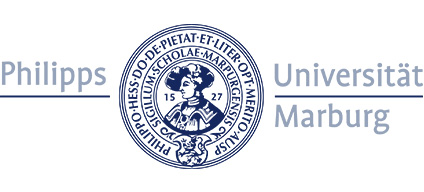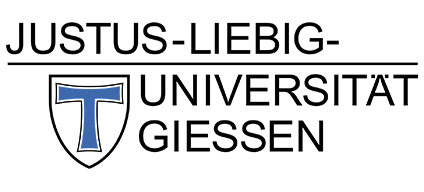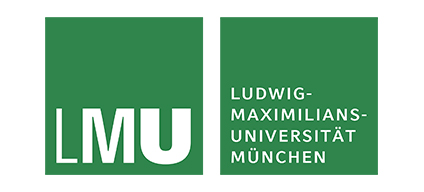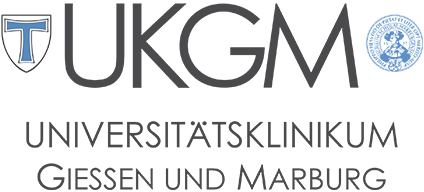Main Content
Publications of subproject TP1
Human leukocyte antigen (HLA)-transgenic mice as a pre-clinical model of pemphigus vulgaris
Original papers
Polakova A, Kauter L, Ismagambetova A, Didona D, Solimani F, Ghoreschi K, Hertl M, Möbs C, Hudemann C. Detection of rare autoreactive T cell subsets in patients with pemphigus vulgaris. Front Immunol. 2022, 13:979277. https://doi.org/10.3389/fimmu.2022.979277. eCollection 2022
Hudemann C, Exner Y, Pollmann R, Schneider K, Zakrzewicz A, Feldhoff S, Schmidt T, Spindler V, Rafei-Shamsabadi D, Völlner F, Waschke J, Tikkanen R, Hertl M, Eming R. IgG against the Membrane-Proximal Portion of the Desmoglein 3 Ectodomain Induces Loss of Keratinocyte Adhesion, a Hallmark in Pemphigus Vulgaris. J Invest Dermatol. 2022, S0022-202X(22)01901-7. https://doi.org/10.1016/j.jid.2022.07.030. Online ahead of print.
Hudemann C, Maglie R, Llamazares-Prada M, Beckert B, Didona D, Tikkanen R, Schmitt T, Hashimoto T, Waschke J, Hertl M, Eming R. Human Desmocollin 3‒Specific IgG Antibodies Are Pathogenic in a Humanized HLA Class II Transgenic Mouse Model of Pemphigus. J Invest Dermatol. 2022; 142(3B), 915-923. https://doi.org/10.1016/j.jid.2021.06.017.
Boch K, Dräger S, Zillikens D, Hudemann C, Hammers CM, et al. Immunization with desmoglein 3 induces non-pathogenic autoantibodies in mice. PLOS ONE. 2021. 16(11):e0259586. https://doi.org/10.1371/journal.pone.0259586
Sliwiak P, Folwarczny E, Didona D, Fink S, Wiegand C, Hanschmann E M, Hertl M, Hudemann C. Redox Enzymes of the Thioredoxin Family as Potential and Novel Markers in Pemphigus. Oxidative Medicine and Cellular Longevity. 2021. https://doi.org/10.1155/2021/6672693
Pollmann R, Walter E, Schmidt T, Waschke J, Hertl M, Möbs C, Eming R. Identification of Autoreactive B cell Subpopulations in Peripheral Blood of Autoimmune Patients with Pemphigus vulgaris. Front Immunol. 2019. https://doi.org/10.3389/fimmu.2019.01375
Walter E, Vielmuth F, Wanuske MT, Seifert M, Pollmann R, Eming R, Waschke J. Role of Dsg1- and Dsg3-Mediated Signaling in Pemphigus Autoantibody-Induced Loss of Keratinocyte Cohesion. Front Immunol. 2019. https://doi.org/10.3389/fimmu.2019.01128
Kugelmann D, Rötzer V, Walter E, Egu DT, Fuchs MT, Vielmuth F, Vargas-Robles H, Schnoor M, Hertl M, Eming R, Rottner K, Schmidt A, Spindler V, Waschke J. Role of Src and Cortactin in Pemphigus Skin Blistering. Front Immunol. 2019;10:626. https://doi.org/10.3389/fimmu.2019.00626
Inhalt ausklappen Inhalt einklappen Published before 2019
Pollmann R, Eming R. Research Techniques Made Simple: Mouse Models of Autoimmune Blistering Diseases. J Invest Dermatol. 2017;137(1):e1-e6. https://doi.org/10.1016/j.jid.2016.11.003
Purath U., Ibrahim R., Zeitvogel J., Renz H., Runkel F., Schmidts T., Dobler D., Werfel T., Müller A., Garn H. Efficacy of T cell transcription factor-specific DNAzymes in murine skin inflammation models. J. Allergy Clin. Immunol. 2015. https://doi.org/10.1016/j.jaci.2015.09.022
Homburg, U., Renz H, Timmer W, Hohlfeld JM, Seitz F, Lüer K, Mayer A, Wacker A, Schmidt O, Kuhlmann J, Turowska A, Roller J, Kutz K, Schlüter G, Krug N, Garn H. Safety and tolerability of a novel inhaled GATA3 mRNA targeting DNAzyme in patients with TH2-driven asthma. J. Allergy Clin. Immunol. 2015. https://doi.org/10.1016/j.jaci.2015.02.018
Krug N., Hohlfeld JM, Kirsten AM, Kornmann O, Beeh KM, Kappeler D, Korn S, Ignatenko S, Timmer W, Rogon C, Zeitvogel J, Zhang N, Bille J, Homburg U, Turowska A, Bachert C, Werfel T, Buhl R, Renz J, Garn H*, Renz H*. Allergen-induced asthmatic responses modified by a GATA3-specific DNAzyme. N. Engl. J. Med. 2015, 372,1987-95. DOI: 10.1056/NEJMoa1411776
Eming R, Hennerici T, Bäcklund J, Feliciani C, Visconti KC, Willenborg S, Schmidt J, Holmdahl R, Sonderstrup G, Hertl M. Pathogenic IgG antibodies against desmoglein 3 in pemphigus vulgaris are regulated by HLA-DRB1*04:02-restricted T cells. J Immunol. 2014 193(9):4391-9. https://doi.org/10.4049/jimmunol.1401081
Nagel A, Möbs C, Raifer H, Wiendl H, Hertl M, Eming R. CD3-positive B cells: a storage-dependent phenomenon. Plos One. 2014, Oct 16;9(10):e110138. doi: 10.1371/journal.pone.0110138. eCollection 2014. https://doi.org/10.1371/journal.pone.0110138
Dicke T, Pali-Schöll I, Kaufmann A, Bauer S, Renz H, Garn H. Absence of unspecific innate immune cell activation by GATA-3-specific DNAzymes. Nucleic Acid Ther. 2012 Apr;22(2):117-26. https://doi.org/10.1089/nat.2011.0294
Rafei D, Müller R, Ishii N, Llamazares M, Hashimoto T, Hertl M, Eming R. IgG autoantibodies against desmocollin 3 in pemphigus sera induce loss of keratinocyte adhesion. Am J Pathol. 2011;178:718-23. https://doi.org/10.1016/j.ajpath.2010.10.016
Nagel A, Podstawa E, Eickmann M, Müller HH, Hertl M, Eming R. Rituximab mediates a strong elevation of B-cell-activating factor associated with increased pathogen-specific IgG but not autoantibodies in pemphigus vulgaris. J Invest Dermatol. 2009;129:2202-10. https://doi.org/10.1038/jid.2009.27
Sel S, Wegmann M, Dicke T, Sel S, Henke W, Yildirim AO, Renz H, Garn H. Effective prevention and therapy of experimental allergic asthma using a GATA-3-specific DNAzyme. J Allergy Clin Immunol. 2008 Apr;121(4):910-916. https://doi.org/10.1016/j.jaci.2007.12.1175
Eming R, Nagel A, Wolff-Franke S, Podstawa E, Debus D, Hertl M. Rituximab exerts a dual effect in pemphigus vulgaris. J Invest Dermatol. 2008; 128: 2850–8. https://doi.org/10.1038/jid.2008.172
Eming R, Büdinger L, Riechers R, Christensen O, Bohlen H, Kalish R, Hertl M. Frequency analysis of autoreactive T-helper 1 and 2 cells in bullous pemphigoid and pemphigus vulgaris by enzyme-linked immunospot assay. Br J Dermatol. 2000;143:1279-82. https://doi.org/10.1046/j.1365-2133.2000.03901.x
Review articles
Spindler V, Eming R, Schmidt E, Amagai M, Grando S, Jonkman MF, Kowalczyk AP, Müller EJ, Payne AS, Pincelli C, Sinha AA, Sprecher E, Zillikens D, Hertl M, Waschke J. Mechanisms Causing Loss of Keratinocyte Cohesion in Pemphigus. J Invest Dermatol. 2018; 138(1): 32-37. https://doi.org/10.1016/j.jid.2017.06.022
Garn, H., H. Renz. GATA-3-specific DNAzyme - A novel approach for stratified asthma therapy. Eur J Immunol 2017; 47: 22-30. https://doi.org/10.1002/eji.201646450
Potaczek. D.P., H. Garn, S.D. Unger, H. Renz. Antisense molecules: A new class of drugs. J Allergy Clin Immunol 2016; 137: 1334-1346. https://doi.org/10.1016/j.jaci.2015.12.1344





